2. A mixture of painting pigments is separated into two components (A and B) using paper chromatography. The chromatography paper in this experiment is very polar. The solvent, ethyl acetate, is less polar than the (a) Which component is more polar? (A, B) Justify your answer based on the results. sclvent front pencil line wirh spol of mixhne рaper. solvet froet schvemt Jevel an beaker (b) If the paper were changed to something more nonpolar than the solvent, predict how the results would change and briefly explain your reasoning (~15 WoL). ove How wold s a udardto find unknowe
2. A mixture of painting pigments is separated into two components (A and B) using paper chromatography. The chromatography paper in this experiment is very polar. The solvent, ethyl acetate, is less polar than the (a) Which component is more polar? (A, B) Justify your answer based on the results. sclvent front pencil line wirh spol of mixhne рaper. solvet froet schvemt Jevel an beaker (b) If the paper were changed to something more nonpolar than the solvent, predict how the results would change and briefly explain your reasoning (~15 WoL). ove How wold s a udardto find unknowe
Chemistry
10th Edition
ISBN:9781305957404
Author:Steven S. Zumdahl, Susan A. Zumdahl, Donald J. DeCoste
Publisher:Steven S. Zumdahl, Susan A. Zumdahl, Donald J. DeCoste
Chapter1: Chemical Foundations
Section: Chapter Questions
Problem 1RQ: Define and explain the differences between the following terms. a. law and theory b. theory and...
Related questions
Question
How do I complete this problem?

Transcribed Image Text:2. A mixture of painting pigments is separated into two
components (A and B) using paper chromatography. The
chromatography paper in this experiment is very polar. The
solvent, ethyl acetate, is less polar than the paper.
(a) Which component is more polar? (A, B) Justify your
answer based on the results.
selvet
from
pencil
line
wirlh
spol of
mixhre
solve
froet
schet
level
beaker
(b) If the paper were changed to something more nonpolar than the solvent, predict how the results would chang
and briefly explain your reasoning (~15 WoL).
bove Howwoudd this afe
udardto find unksowa
Expert Solution
This question has been solved!
Explore an expertly crafted, step-by-step solution for a thorough understanding of key concepts.
This is a popular solution!
Trending now
This is a popular solution!
Step by step
Solved in 2 steps

Knowledge Booster
Learn more about
Need a deep-dive on the concept behind this application? Look no further. Learn more about this topic, chemistry and related others by exploring similar questions and additional content below.Recommended textbooks for you
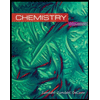
Chemistry
Chemistry
ISBN:
9781305957404
Author:
Steven S. Zumdahl, Susan A. Zumdahl, Donald J. DeCoste
Publisher:
Cengage Learning
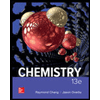
Chemistry
Chemistry
ISBN:
9781259911156
Author:
Raymond Chang Dr., Jason Overby Professor
Publisher:
McGraw-Hill Education
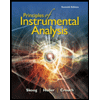
Principles of Instrumental Analysis
Chemistry
ISBN:
9781305577213
Author:
Douglas A. Skoog, F. James Holler, Stanley R. Crouch
Publisher:
Cengage Learning

Chemistry
Chemistry
ISBN:
9781305957404
Author:
Steven S. Zumdahl, Susan A. Zumdahl, Donald J. DeCoste
Publisher:
Cengage Learning

Chemistry
Chemistry
ISBN:
9781259911156
Author:
Raymond Chang Dr., Jason Overby Professor
Publisher:
McGraw-Hill Education

Principles of Instrumental Analysis
Chemistry
ISBN:
9781305577213
Author:
Douglas A. Skoog, F. James Holler, Stanley R. Crouch
Publisher:
Cengage Learning
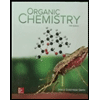
Organic Chemistry
Chemistry
ISBN:
9780078021558
Author:
Janice Gorzynski Smith Dr.
Publisher:
McGraw-Hill Education
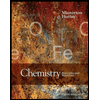
Chemistry: Principles and Reactions
Chemistry
ISBN:
9781305079373
Author:
William L. Masterton, Cecile N. Hurley
Publisher:
Cengage Learning
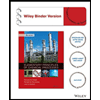
Elementary Principles of Chemical Processes, Bind…
Chemistry
ISBN:
9781118431221
Author:
Richard M. Felder, Ronald W. Rousseau, Lisa G. Bullard
Publisher:
WILEY